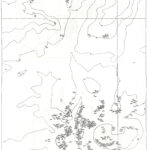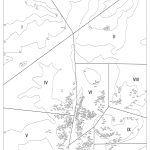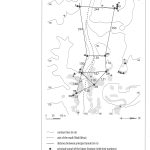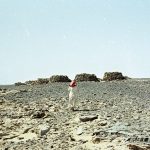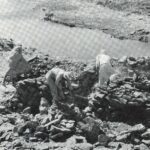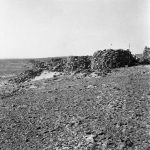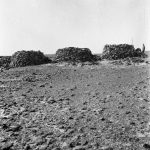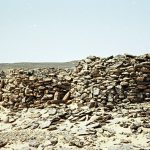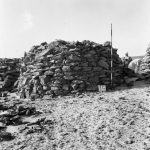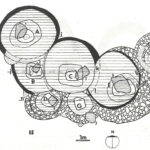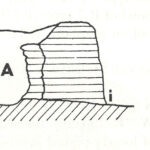WĀDĪ QIṬNA
| Arabic | وادي قطنة |
| English | Wadi Qitna |
| French | Ouadi Qitna |
| DEChriM ID | 70 |
| Trismegistos GeoID | 2842 |
| Pleiades ID | - | PAThs ID | - |
| Ancient name | - |
| Modern name | Wādī Qiṭna |
| Latitude | 23.228144 |
| Longitude | 32.817541 |
| Date from | - |
| Date to | - |
| Typology | Cemetery |
| Dating criteria | - |
| Description | Wādī Qiṭna is a cemetery in Egyptian Nubia situated on the west bank of the Nile, 65km south of Aswān. The burials here consisted in tumuli of two basic types – heaped or built of dry masonry –, with a total of 520 individual tumuli and 56 non-funerary structures recorded during the course of excavations, yielding the remains of some 558 individuals (Strouhal 2020: 33, 36). The association of the site with fourth century Christianity is due to a single find, that of a glass plate found in tumulus 15A (see artefact 1279 / TM 32985) (Strouhal 1984a: 210, 215-219; id 2020: 43). Alongside the cemetery of Kalābša South, the use of the Wādī Qiṭna cemetery has been situated between the second half of the third century and the end of the fifth century, largely thanks to ceramic (Strouhal 1984a: 101-194, 265; id 2020: 43), but also with the aid of 14C dating and numismatic evidence (Strouhal 1984a: 230, 241 and table 44). |
| Archaeological research | The site had apparently gone unnoticed in earlier expeditions to Egyptian Nubia and was first recorded during a survey of the area conducted by the Czechoslovak Institute of Egyptology, Charles University (Prague and Cairo) on May 1st, 1964 (Strouhal 1984a: 13). This survey, and the subsequent excavation work at Wādī Qiṭna, as well as Kalābša South and other sites within the Czech concession, which ran for some 37km from Kalābša to Ǧarf Ḥusayn, was conducted as part of the UNESCO campaign to safeguard the historic monuments of Nubia. The identification of Wādī Qiṭna occurred during the fourth Czech expedition, led by Z. Žába, who was then director of the Institute, which resulted in some preliminary documentation work at the site as well as the collection of some material. It was suggested by E. Strouhal that the following campaign be dedicated to the site’s excavation, a proposal which was accepted, with part of the fifth expedition, conducted the following year (1965), dedicated to a brief campaign at Wādī Qiṭna (April 2nd-May 1st). It was revealed that the actual number of tumuli was much higher than the number recorded during the initial survey of the site, leading to what sounds like a very intense and somewhat unmethodical campaign. Work was directed by Z. Žába and assisted by E. Strouhal (Strouhal 1984a: 14). A request of the latter to continue work the following season was rejected in favour of the mastaba of Ptahshepses at Abusir, and the site has since been flooded by the Aswan High Damn (Strouhal 1984a: 14). |
• Bernard, H. and E. Strouhal. 2004. “Wadi Qitna Revisited.” Annals of the Náprstek Museum 25: 29-55.
• Smrčka, V., J. Jambor, M. Salaš, and E. Strouhal. 1998. “Reconstructing the Diet in Wadi Qitna, Egyptian Nubia.” Anthropologie 26, 3: 267-274.
• Strouhal, E. 1971. “A Remark on Palaeodemography According to the Czechoslovak Research at Wadi Qitna (Egyptian Nubia).” In Actes du 7e congrès international des sciences préhistoriques et protohistoriques, edited by J. Filip, 1272-1275. Prague: Academia.
• Strouhal, E. 1979. “Contribution to Archaeology and Anthropology of Egyptian Nubia in 4th-6th century A.D.” In Acts of the First International Congress of Egyptology, Cairo, 1976, edited by W. F. Reinecke, 609-613. Berlin: Akademie Verlag.
• Strouhal, E. 1982 “Hand-Made Pottery of the IV-VI Centuries A.D. Dodecaschoinos.” In Nubian Studies. Proceedings of the Symposium for Nubian Studies, 215-222. Warminster: Aris and Phillips.
• Strouhal, E. 1984a. Wadi Qitna and Kalabsha-South. Late Roman – Early Byzantine Tumuli Cemeteries in Egyptian Nubia. Vol. I. Archaeology. Prague: Charles University.
• Strouhal, E. 1984b. “Social Stratification at the Wadi Qitna Cemetery.” In Meroitistische Forschungen 1980: Akten der 4. Internationalen Tagung für Meroitistische Forschungen vom 24. bis 29. November 1980 in Berlin, edited by F. Hintze, 522-543. Berlin: Akademie-Verlag.
• Strouhal, E. 1986b. “Wadi Qitna.“ In Lexikon der Ägyptologie, vol. 6, edited by W. Helck and E. Otto, 1116-1119. Wiesbaden: Otto Harrassowitz.
• Strouhal, E. 1986c. “Demographic Analysis of Multiple and Clustered Burials at Wadi Qitna, Egyptian Nubia.” Anthropologie 24, 2: 249-256.
• Strouhal, E. 1988. “Demography of the Late Roman-Early Byzantine Cemetery at Wadi Qitna.” In Akten des vierten Internationalen Ägyptologen Kongresses, München 1985, vol. 1. Methoden und Geschichte der Ägyptologie – Informatik – Keramologie – Anthropologie, edited by S. Schoske, 339-349. Hamburg: Helmut Buske.
• Strouhal, E. 1990. “Family Structure of the Wadi Qitna Population (Egyptian Nubia, 3rd-5th cent. AD.)” In NUBICA I/II. International Annual for Ethiopian, Meroitic and Nubian Studies, edited by P. O. Scholz and C. D. G. Müller, 611-629. Köln: Jürgen Dinter.
• Strouhal, E. 2014. “Anthropology of Wadi Qitna and Kalabsha South.” In The Fourth Cataract and Beyond: Proceedings of the 12th International Conference for Nubian Studies, edited by J. R. Anderson and D. A. Welsby, 857-866. Leuven: Peeters.
• Strouhal, E. 2020. Wadi Qitna and Kalabsha-South. Late Roman – Early Byzantine Tumuli Cemeteries in Egyptian Nubia. Vol II. Anthropology. Prague: Charles University.


 Json data
Json data